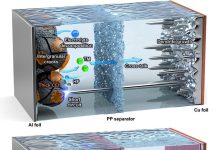
As the world moves away from fossil fuels and toward cleaner energy like solar and wind, one big challenge remains: how to store electricity when the sun isn’t shining or the wind isn’t blowing.
To keep our power supply reliable 24/7, we need storage systems that can hold large amounts of electricity for days—or even weeks—and release it when needed.
A team of researchers from MIT and the Norwegian University of Science and Technology (NTNU) is exploring a promising solution: liquid air energy storage, or LAES.
This method works by cooling air until it becomes a liquid, storing it in tanks, and then turning it back into a gas to produce electricity when demand is high.
The process has three main steps.
First, when there’s extra electricity available, the system uses that power to draw in air, clean it, and cool it to the point where it becomes a liquid. That liquid air is stored in insulated tanks.
Later, when electricity is needed, the liquid air is warmed up, turns back into gas, and flows through a turbine to generate electricity. It’s clean, because it uses only air and electricity, and it doesn’t produce any pollution.
What makes LAES especially attractive is that it doesn’t depend on special locations like pumped hydro systems (which need mountains and lakes), and it doesn’t rely on rare materials like lithium batteries.
It can be built in many places and uses parts that are already available on the market.
But the big question is: can it make money? To find out, the researchers built a computer model that looks at how LAES would perform on future power grids in the U.S., under different energy policy scenarios.
They focused on what’s called “net present value,” or NPV—a way of measuring if a project will earn more than it costs over time. They also looked at “levelized cost of storage” (LCOS), which shows how much it costs to store each unit of energy.
Their results showed that LAES could be economically viable in some places, like Texas and Florida, but mostly under very aggressive clean energy goals, such as achieving 100% clean electricity by 2035. Even then, it was only profitable in a few regions.
The team also tested whether making the system more energy-efficient would help. Surprisingly, even big improvements in efficiency didn’t have a big effect on profitability.
However, they found that financial support—like government subsidies to help with startup costs—could make a big difference. In fact, with a 40% to 60% subsidy, LAES could be viable across many areas, even under more realistic energy plans.
When compared to other storage methods, LAES also did well. Its LCOS was around $60 per megawatt-hour—much lower than lithium-ion batteries and pumped hydro. Interestingly, the cost varied depending on where the system was used, suggesting that location really matters.
While LAES might not be ready for large-scale investment just yet, the researchers believe it still has strong potential. As demand for long-duration energy storage grows and other options remain limited, LAES could become an important part of a reliable, clean energy future.
The technology is already here—it just needs the right conditions to take off.
Source: MIT.



